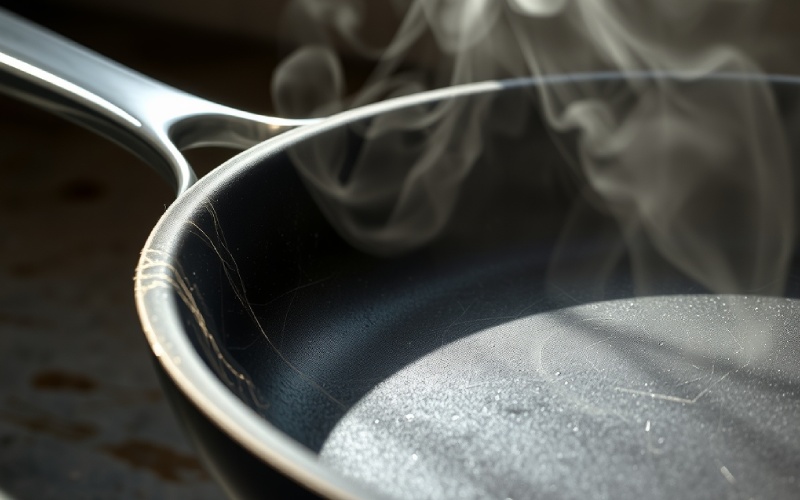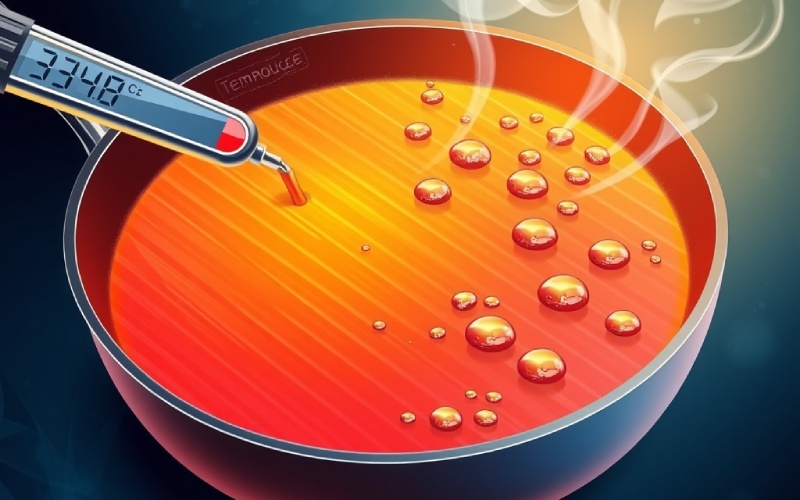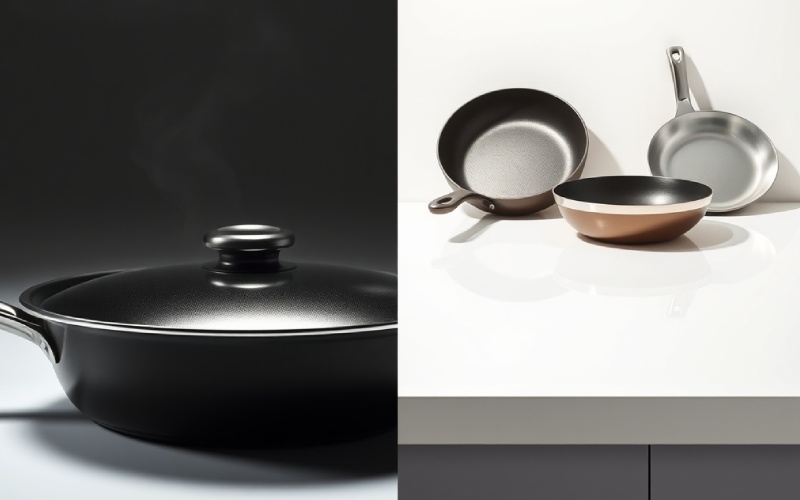Laissez Istar vous aider à démarrer votre projet avec notre expérience et notre savoir-faire !
Téléchargez vos fichiers de conception et vos exigences de production et nous vous répondrons dans les 30 minutes !

I remember the first time I used a nonstick pan. It was a game-changer. My scrambled eggs, which usually took a lot of work to clean off my old stainless-steel pan, just slid onto my plate. It seemed like magic. That “magic” comes from a chemical layer called Teflon. For many years, Teflon products have been a common sight in kitchens all over the world. But as someone who has written about technology and its effects for a long time, I’ve learned that easy solutions often bring up questions. The story of Teflon is a great example of chemistry, user safety, and how our knowledge of the materials we use changes over time. This article will look into the science of Teflon, talk about the health worries that have come up, and give you the facts you need to make a smart choice for your kitchen.
Teflon is the famous brand name for a chemical called polytetrafluoroethylene, or PTFE. It was found by chance in 1938 and is a man-made polymer that is quite amazing. The reason it’s so non-stick is because of its structure, which is made of carbon and fluorine atoms. This makes a surface that has very little friction, doesn’t react with other things, and is waterproof. At first, it was used for industrial jobs, even in the front parts of NASA spaceships. But it didn’t take long for people to see how useful it was for the home, and that’s when nonstick cookware became popular.
The coating itself is a kind of plastic that is put on pots and pans and then heated to make that smooth, simple-to-clean surface we all like. This nonstick surface has made cooking everything from fragile fish to light pancakes much easier for millions of people. But the handiness of this commonly used coating has been put in doubt by worries about the chemicals used to make it and the possible health dangers from using it.
The main worry about Teflon for a long time wasn’t the PTFE itself, but another chemical used to make it: perfluorooctanoic acid, or PFOA. PFOA is part of a bigger group of chemicals called per- and polyfluoroalkyl substances (PFAS), which are often called “forever chemicals” because they stay in the environment and our bodies for a very long time. For many years, PFOA was a key part in making Teflon.
The issue was that small amounts of PFOA could stay in the final Teflon products and get out when used. Studies started showing connections between being exposed to PFOA and many serious health conditions. Research has linked PFOA to a higher chance of getting testicular cancer and kidney cancer. Besides cancer, PFOA has also been connected to thyroid problems, long-term kidney disease, liver disease, and high cholesterol. There were also worries about problems with growth, like low birth weight in babies exposed to PFOA.

Yes, and this is a very important part of the Teflon safety story. Because of the growing proof of PFOA’s health dangers and what the public wanted, the U.S. Environmental Protection Agency (EPA) started the PFOA Stewardship Program in 2006. In this program, eight big companies agreed to greatly lower and finally stop using PFOA in their factory releases and products.
By 2013, the use of PFOA to make Teflon was pretty much stopped in the United States and many other places. This means that any new Teflon-coated cookware you purchase today is PFOA-free. This was a huge move to fix the main health worries that had been brought up about these nonstick products for many years. So, when you see “PFOA-free” on a new pan’s label, this is the story behind it.
Even though PFOA is no longer used to make it, there is still one big safety point to remember when using Teflon cookware: high heat. When a Teflon coating gets hotter than 500°F (260°C), the PTFE itself can start to break apart and let out fumes. These fumes can cause a short-term, flu-like sickness called polymer fume fever, or more casually, the “Teflon flu.”
The signs of polymer fume fever can be chills, a fever, a headache, body aches, and sometimes a tight feeling in the chest. While these signs usually don’t last long and go away by themselves, it can be an uncomfortable experience. It’s important to know that an empty pan can get to these high temperatures very fast on a hot stove. This is why you should never heat an empty nonstick pan. Always put oil, butter, or your food in the pan before you turn on the heat.
The main known danger from breathing in the fumes of a pan with an overheated Teflon coating is polymer fume fever. This sickness doesn’t happen often, but it has been reported. For most healthy grown-ups, having polymer fume fever once is not likely to cause lasting damage. But the fumes can be much more unsafe for people who already have breathing problems.
It is also very important to know that these polymer fumes are very poisonous to birds. Their breathing systems are much more sensitive than ours, and breathing in the fumes from an overheated Teflon pan can kill pet birds. This is a big thing to think about for any bird owner who also uses nonstick cookware. The American Cancer Society says there are no known dangers to people from using cookware with a Teflon coating the way it’s meant to be used.
The good news is that using your Teflon pan safely is simple. The most important thing is to stay away from high heat. Most cooking happens at temperatures much lower than the point where the Teflon coating starts to fall apart. For example, butter and cooking oils will begin to smoke at around 400°F (204°C), which is a good sign that your pan is getting too hot.
To lower any possible danger, always cook on low to medium heat. Make sure your kitchen has good airflow by using a fan or opening a window. It’s also smart to use silicone or plastic utensils to keep from scratching the nonstick surface. While swallowing a few tiny pieces of the coating is not thought to be dangerous, a scratched and worn-out pan is a sign that you need a new one. You can often put new nonstick pans in the dishwasher, but always read the maker’s directions; washing by hand is usually a better choice.
A frequent question is if a chipped or scratched Teflon pan is a health danger. The maker and many experts say that accidentally swallowing a small piece of the nonstick coating is not dangerous, because the material doesn’t react with anything and will go through your body without being taken in. The biggest worry with a scratched pan is that the coating can keep coming off, and it might not work as well as a nonstick surface.
If your nonstick pan has a lot of scratches and the coating is starting to peel, it’s smart to get a new one. This isn’t mainly because of a direct poison threat from eating the pieces, but more as a general rule to use cookware that is in good shape. To make your pan last longer and stop scratches, don’t use metal tools or rough cleaning pads.

The effect of Teflon and similar chemicals on the environment is a big worry. The PFAS group of chemicals, which includes the now-stopped PFOA, are called “forever chemicals” because they don’t break down in the environment. The process of making PTFE can let out harmful PFAS side-products into the environment, which adds to the pollution of water and soil.
When you throw away an old Teflon pan in a garbage dump, the coating can break down over time, possibly letting PFAS into the liquid at the dump, which can then pollute groundwater. Burning trash that has PTFE in it can also let out strong greenhouse gases. The chemical that replaced PFOA, called GenX, is also in the PFAS group and has brought up similar worries about how long it stays in the environment and its possible health effects.
If you are still worried about the possible health and environmental dangers of Teflon, there are many great other nonstick choices you can buy. Ceramic-coated cookware is a well-liked choice and is usually seen as a safe option, as it doesn’t use the same chemical materials as Teflon.
Cast iron, when seasoned the right way, gets a naturally nonstick surface and lasts a very long time. Stainless steel is another wonderful choice, known for lasting a long time and heating evenly, though you need more oil or butter to stop food from sticking. Silicone tools and baking pans are also used a lot and are a safe and useful choice in the kitchen.
Based on what we know from science right now, new Teflon cookware that is PFOA-free is usually thought to be safe for normal home cooking. The main thing is to use it the way it’s supposed to be used, which means staying away from high heat that can make the coating break down and let out fumes. By following easy safety rules, you can have the convenience of your nonstick cookware without too much worry.
But the worries about the environmental effects of the PFAS group of chemicals are real and still exist. As buyers, being aware of the full life of the products we use, from how they are made to how they are thrown away, is becoming more and more important. For me, it’s about having the correct tool for the specific task. I still like my nonstick pan for some things, but I also have a reliable cast iron pan and stainless steel pots that I use. Making a choice based on good information is the best way to have peace of mind in the kitchen.